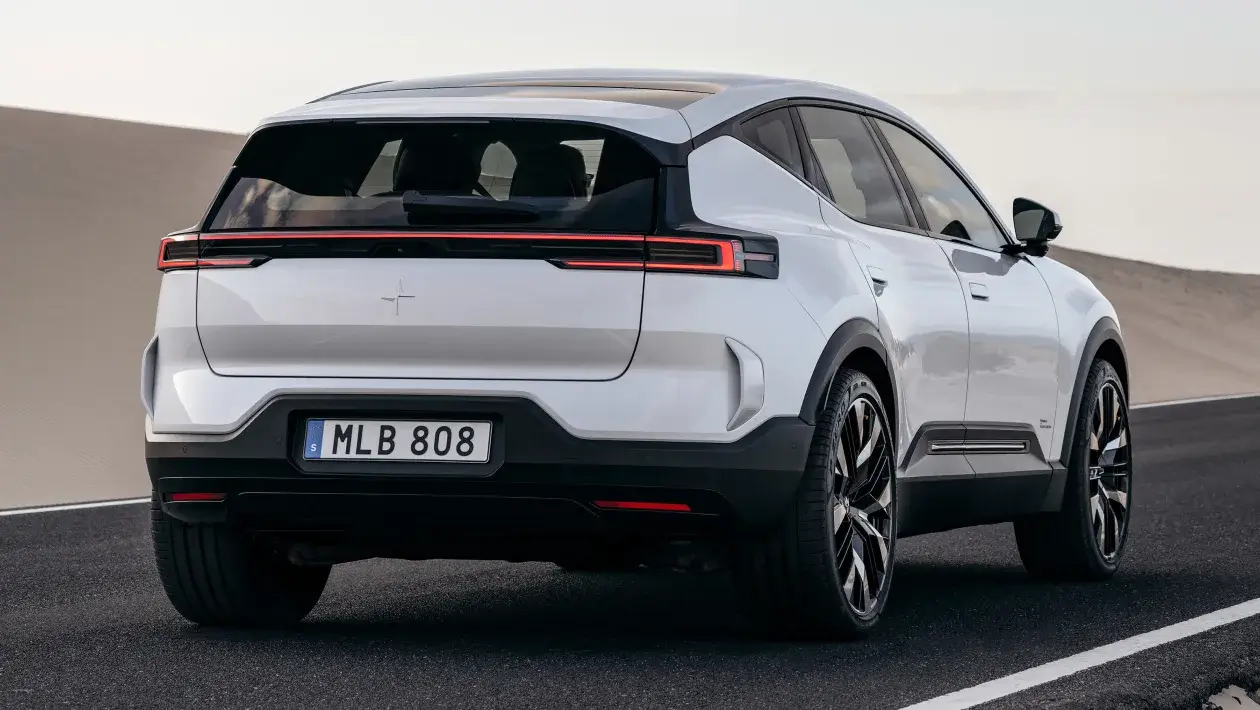Polestar details its upcoming electric SUV to arrive in 2023.
Polestar boss Thomas Ingenlath has given further details about how the Swedish performance brand will expand its line-up following the news yesterday that it is to be listed on the NASDAQ at a value of $20bn (AUD$27.3bn)
As part of that announcement, the brand revealed that it will launch a second SUV as part of a model line expansion that will see three new EVs introduced by 2024. It will follow the 3 flagship, which launches in 2022 as a more dynamically oriented twin to the electric Volvo XC90 successor, and a year ahead of the production version of the Precept grand tourer, which has now been confirmed to take the 5 nameplate.
Previewed in silhouette form alongside what are obviously the 3 and 5, the 4 will obviously sit between the two in terms of size, but with a heightened focus on accessibility over outright luxury and performance.
Ingenlath explained that the price difference between the 3 and 4 will be the crucial differentiator: The 3 is, he explained, an “XC90-sized car” (it will use the same SPA2 architecture as its Volvo sibling), which “for European dimensions is a big SUV”, but has “nothing to do” with the XC90 shape-wise, as it will have more aerodynamically-led styling and “incredible stance and power”, as previewed by the Precept concept.
As a result, the 3 will cost more than €75,000 ($120,000) and be pitched as an electric equivalent to premium, performance-oriented SUVs like the Porsche Cayenne, Ingenlath said. The 4, by contrast, will be priced under that point to appeal to a wider target market.
“This car is slightly smaller, yes, but we will not compromise much on the interior length. It is slightly more ground-hugging and has a bit more of a ‘coupé-type’ of roofline, and really brings the greatness of the brand into a segment which – price point-wise – will reach €45,000 ($70,000) at some point in time.
The two cars will be “differentiated in silhouette”, he confirmed, and will offer different interior environments in line with their contrasting billing, but will share the ‘Polestar drivetrain’ – likely to be the 300kW twin-motor set-up deployed in the top-rung 2 – which makes them “very powerful”. The 4, essentially, will serve as the SUV equivalent to the Polestar 2, he suggested.
The coupe-aping roofline suggests that it will be Polestar’s version of Volvo’s similarly sized C40 Recharge, which itself uses the same CMA architecture and 300kW powertrain as the Polestar 2. The crucial differentiator, as with all Polestar models, will be the company’s characteristically sleek and minimalist design cues, which lean heavily on aerodynamic efficiency and promoting a dynamic character.
Felix Page




